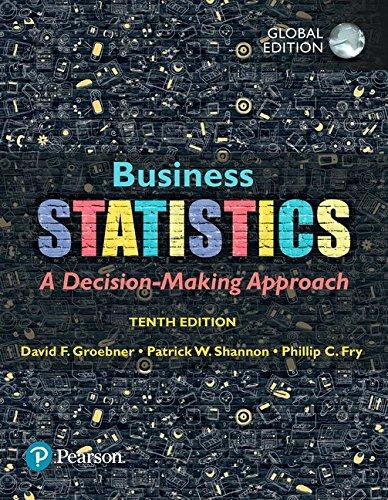Although retail store scanners can save customers a great deal of time, scanners sometimes misread an items
Question:
Although retail store scanners can save customers a great deal of time, scanners sometimes misread an item’s price code. Before investing in one of three new systems, a store would like to determine if there is a difference in scanner accuracy. To investigate possible differences in scanner accuracy, 30 shopping carts were randomly selected from customers at the store. The 30 carts differed from each other in both the number and types of items each contained. The items in each cart were then scanned by the three new scanning systems under consideration as well as by the current scanner used in the store at a specially designed test facility for the purposes of the analysis. Each item was also checked manually, and a count was kept of the number of scanning errors made by each scanner for each basket.
Each of the scannings was repeated 30 times, and the average number of scanning errors was determined. The sample data are in the file called Scanners.
a. What type of experimental design did the store use to test for differences among scanning systems?
Why was this type of design selected?
b. State the primary hypotheses of interest for this test.
c. At the 0.01 level of significance, is there a difference in the average number of errors among the four different scanners?
d. (1) Is there a difference in the average number of errors by cart? (2) Was the store correct in blocking by cart?
e. If you determined that there is a difference in the average number of errors among the four different scanners, identify where those differences exist.
f. Do you think that the store should upgrade from its existing scanner to Scanner A, Scanner B, or Scanner C? What other factors may it want to consider before making a decision?
Step by Step Answer:

Business Statistics
ISBN: 9781292220383
10th Global Edition
Authors: David Groebner, Patrick Shannon, Phillip Fry






